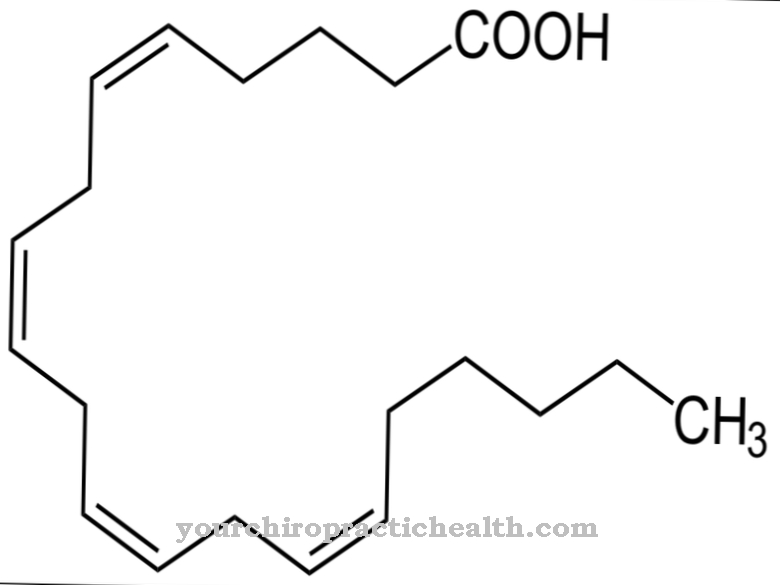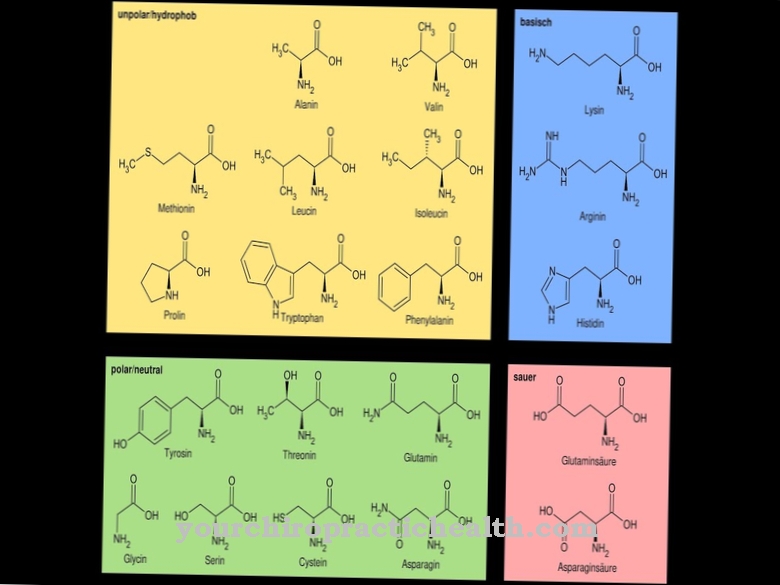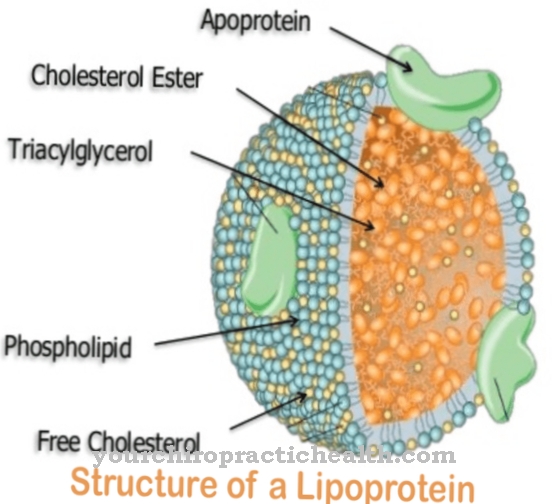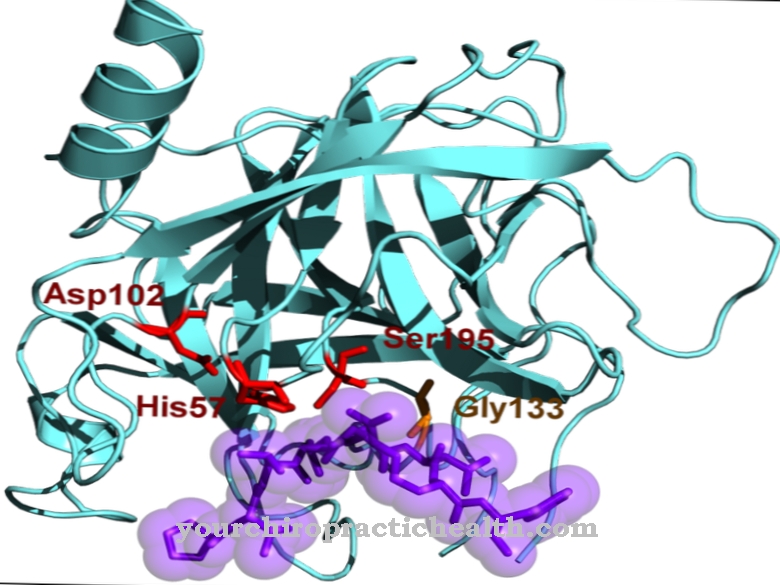Lutein belongs to the group of substances of carotenoids and is known as a Eye vitamin known. It is produced exclusively in plants, where it acts as an important component of the chloroplasts. In the plant organism, it serves as an energy collecting molecule in order to use the solar energy effectively in photosynthesis.
What is lutein?
Lutein is a carotenoid and, along with zeaxanthin, is one of the xanthophylls. It contains 40 carbon atoms, 56 hydrogen atoms and two oxygen atoms. There are 10 conjugated double bonds and one single double bond between the carbon atoms.
A cyclohexanol ring containing three methyl groups is bonded to each end of the carbon chain. Both rings also have hydroxyl groups. Therefore, the lutein molecule does not belong to the provitamin A molecules (beta carotene). Despite the hydroxyl groups, lutein is lipophilic. The conjugated double bonds determine the properties of lutein and the related xanthophylls. They produce the orange-yellow color, so that lutein is also traded as a food coloring under the name E 161b.
Conjugated double bonds are characterized by the alternation of single and double bonds. This enables the double bonds to interact with one another, which leads to better energy distribution and, above all, better energy absorption by the molecule. For example, lutein absorbs light in the short-wave blue and ultraviolet spectrum, so that photosynthesis improves the energy yield of plants and protects the eyes of both animals and humans.
At the same time, the lutein molecules also absorb energy from highly excited singlet oxygen and thus have an antioxidant effect. So you are able to intercept free radicals (excited oxygen).
Function, effect & tasks
These properties of lutein make it ideal for protective effects, especially in the eyes. It has been found that a high concentration of carotenoids in the retina significantly reduces the risk of developing macular degeneration (AMD). The yellow spot on the retina is called the macula.
It contains a lot of optic nerves and, to protect them, also a lot of lutein and zeaxanthin. However, with age, the macula degenerates. There are two reasons for this. On the one hand, the cells are slowly destroyed by the influence of the short-wave and high-energy radiation of blue and ultraviolet light. On the other hand, the constant oxidative stress with the formation of free radicals also leads to the breakdown of the retina. Therefore, the increasing age-related macular degeneration is a normal aging process, which, however, can be stopped by certain protective mechanisms.
Lutein, together with the related zeaxanthin, protects the eyes. Both xanthophylls absorb both short-wave blue light and at the same time neutralize highly excited aggressive oxygen. Due to the effect of the conjugated double bonds, the absorbed energy can be well distributed within the molecule. The energy of the stimulated lutein and zeaxanthin is converted into thermal energy and therefore no longer has a harmful effect on the macula.
Several studies have proven the protective effect of lutein. The results were particularly clear with an already advanced AMD. This is where the slowing down of the destructive processes could best be demonstrated. Lutein is always associated with zeaxanthin, which has a similar chemical structure.
Education, occurrence, properties & optimal values
As already mentioned, lutein is only synthesized in plants, where it is a key component of the chloroplasts. It acts here as an energy collector, which contributes to the efficient use of solar energy. In contrast to green chlorophyll, it is not broken down when the light intensity is reduced. That is why the leaves turn yellow-orange in autumn.
The animal and human organism is supplied with lutein exclusively through nutrition. Some organisms turn yellow when this substance accumulates in certain places. The legs and claws of chickens only have a yellow color due to the enrichment of lutein. The yellow color of the egg yolk is also produced by lutein. However, together with zeaxanthin, lutein is particularly important due to its accumulation in the retina in the yellow spot, because this is where it develops its most important protective effect against the macula. A diet rich in lutein makes sense to protect the eyes. The green parts of the plant and leaves contain a particularly large amount of lutein. The yellow color of flowers is also largely caused by lutein.
Kale, parsley, spinach, broccoli, lettuce, peas, Brussels sprouts and green beans contain a lot of lutein. The absorption into the body takes place within the framework of fat digestion and takes place in the small intestine. Lutein is emulsified by the bile acids and prepared for absorption by the small intestine. Fats are necessary to promote lutein absorption, but saturated fatty acids are more suitable than unsaturated ones. Humans are dependent on a constant intake of lutein because it cannot be synthesized in the human body. A continuous supply of lutein is a prerequisite for effective protection of the eyes against AMD.
Diseases & Disorders
Acute health impairments caused by lutein are not known, because the amount ingested through food would not be sufficient either. Carotenoids can make cancer more likely to develop. Years of research have led to the assumption that continuously increased lutein concentrations increase the risk of lung cancer in women.
However, the statistical significance is not sufficient to make a clear statement about it. A lack of lutein has far greater health effects. For the reasons mentioned above, lutein and zeaxanthin play an essential role in the visual process. Chronic lutein deficiency therefore quickly leads to complete blindness.


























